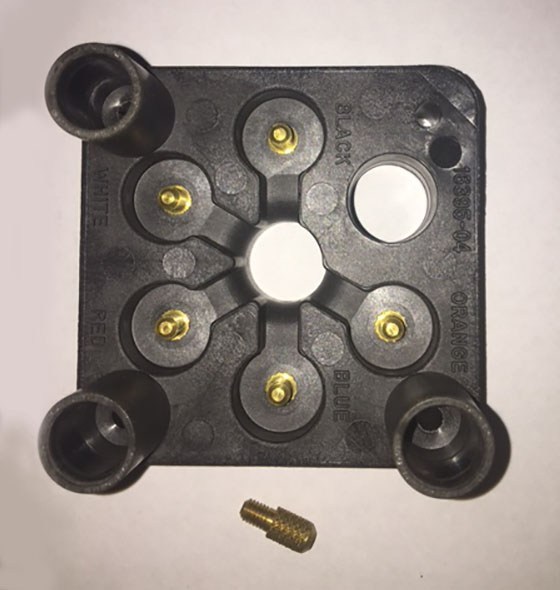Overmolding brass, steel or plastic inserts can be very challenging. Overmolded inserts are usually held in place by shutting off on each half of the cavity or core. Most of the time, there needs to be a preload of .002/in. – .005/in. to insure there is no leakage of plastic. If this is not done, the part could end up being scrap along with the inserts.
Other methods of preload must be used on inserts with open tolerances above +/-.003/in. One of the most common type of inserts that are used, are bushings with internal threads. These types of inserts must have precision shut-off to prevent plastic from leaking into the threads.
Overmolded inserts most typically have some type of knurl, holes or undercuts to prevent the insert from coming out or turning out of the finished part. In some cases, the overmolded inserts cannot be shut-off on both sides. An example of this type of situation is explained in the following case study.
Toth Mold was approached by our customer to see if it was possible to mold six (6) floating inserts in one part and five (5) in another. The part was a two piece electrical plug. As you can see in the photos below, we needed to shut-off on the top side. The bottom side required .093/in. minimum plastic between the insert and face of the part. This was not an easy task considering the number of inserts in the parts. If one of the inserts flashed, the whole part would be scrapped. In turn, this would become very costly since the rectangular inserts at a cost of $3.00 each would add up to a lot of money at $18.00 per unit.
Toth Mold came up with a solution on how to keep one side of the insert free of plastic and the other side with plastic. We made the precision brass inserts and with special gating, we were successful in producing finished parts with a 0% scrap rate. This part as been in production for over 10 years. To learn more about Overmolding, visit us at https://tothmold.net/insert-molding-and-overmolding/.


